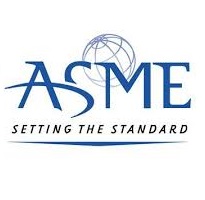دانلود ترجمه مقاله کاربرد دیسک برزیلی درتخمین مدول الاستیک کششی – مجله الزویر
| دانلود رایگان مقاله انگلیسی + خرید ترجمه فارسی
|
|
| عنوان فارسی مقاله: |
برآورد مدول کشسانی کششی با استفاده از دیسک برزیلی از طریق اعمال بار های متمرکز قطری مخالف |
| عنوان انگلیسی مقاله: |
Estimation of the tensile elastic modulus using Brazilian disc by applying diametrically opposed concentrated loads |
|
|
| مشخصات مقاله انگلیسی (PDF) | |
| سال انتشار | ۲۰۰۹ |
| تعداد صفحات مقاله انگلیسی | ۹ صفحه با فرمت pdf |
| رشته های مرتبط با این مقاله | مهندسی معدن، ژئوفیزیک و زمین شناسی |
| گرایش های مرتبط با این مقاله | مکانیک سنگ، ژئوالکتر یک، مغناطیس سنجی و سنگ شناسی |
| مجله | مجله بین المللی مکانیک سنگ و علوم معدن(International Journal of Rock Mechanics & Mining Sciences) |
| دانشگاه | موسسه زمین شناسی و ژئوفیزیک، پکن، چین |
| کلمات کلیدی | دیسک برزیلی، تست برزیلی، تست تقسیم، حل تحلیلی تنش، مدول کشسانی کششی، روش تست |
| شناسه شاپا یا ISSN | ISSN ۱۳۶۵-۱۶۰۹ |
| لینک مقاله در سایت مرجع | لینک این مقاله در سایت ساینس دایرکت |
| نشریه | Elsevier |
| مشخصات و وضعیت ترجمه فارسی این مقاله (Word) | |
| تعداد صفحات ترجمه تایپ شده با فرمت ورد با قابلیت ویرایش و فونت ۱۴ B Nazanin | ۱۷ صفحه |
| ترجمه عناوین تصاویر و جداول | ترجمه نشده است |
| درج تصاویر در فایل ترجمه | درج شده است |
| درج جداول در فایل ترجمه | درج شده است |
| درج فرمولها و محاسبات در فایل ترجمه به صورت عکس | درج شده است |
- فهرست مطالب:
چکیده
۱ مقدمه
۲ راه حل تحلیلی برای جفت بار های خطی فشاری و متقارن مخالف و قطری اعمال شده بر دیسک برزیلی
راه حل دیسک برزیلی همسان کرد در معرض بار های متمرکز
۳ براورد مدول کشسانی کششی سنگ
۳ ۱ روش و تئوری
۳ ۲ نتایج ازمایشی برای اندازه گیری روش و تئوری
۴ بحث
۵ نتیجه گیری
- بخشی از ترجمه:
راه حل تحلیلی فشار یا تنش مختصات مستطیلی برای دیسک برزیل بر اساس نتایج بدست آمده برای مواد سنگی همسان گرد است. مبدا مختصات مرکز دیسک برزیلی است. این یک پایه نظری برای تعیین مدول کشسانی کششی با دیسک برزیلی است.
مدول کشسانی کششی ET، یک پارامتر مهم است که می تواند برای مطالعه خواص کششی مواد سنگی استفاده شود. ولی نمی توان روش فوق را به طور مستقیم در ازمایشکاه انجام داد. یک روش اندازه گیری با دیسک برزیلی در این مقاله برای تعیین آسان ET وچود دارد(شکل ۷). روش اصلی استفاده از دو کرنش سنج در مرکز یا کناره های دیسک در امتداد جهت عمود بر بار خطی P است که برای ثبت کرنش کششی در بخش مرکزی استفاده می شود و یک سنسور نیرو می باشد که برای ثبت نیروی اعمال شده در نظر گرفته می شود و سپس مدول کشسانی تقسیمی ETS را می توان از شیب مقطع خطی منحنی کرنش-تنش ثبت شده بر اساس فرمول ۱۴ بدست اورد. V توسط تست فشاری تک محوری تعیین می شود در نهایت ET را می توان بر اساس فرمول ۱۲ تعیین کرد. به علاوه، شرایط ازمایشی جدید برای ارایه بار های متمرکز خطی ایجاد کرد( شکل ۲).
نتایج آزمایشی ما نشان می دهد که ET مواد سنگی کم تر از EC است و نسبت بین ET و Ec مواد سنگی از جمله مرمر، ماسه سنگ، سنگ اهک و گرانیت حدود ۶۰-۹۰ درصد است. این نتایج مطابق با نتایج ۲۲ است. در نتیجه، انعطاف پذیری، قابلیت مانور و پایایی روش اندازه گیری پیشنهادی خوب بود.
- بخشی از مقاله انگلیسی:
Introduction In general, rocks are inhomogeneous, and contain numerous microcracks. Consequently, rocks show different behavior under tensile and compressive conditions. Accordingly, there are two kinds of elastic modulus: the compressive elastic modulus Ec and the tensile elastic modulus Et. Parameters such as Young’s modulus and Poisson’s ratio are expected to be different under compressive or tensile stress [1,2]. The data reported by Krech et al. [3] and Liao et al. [4] indicate such differences for Young’s modulus and Poisson’s ratio in some rock types (granite, quartzite, sandstone, limestone, argillite). The modulus Ec and the compressive strength sc are easy to measure in the laboratory by uniaxial compression tests. But the parameter Et and the tensile strength st are difficult to obtain by direct tension tests, because it is very difficult and complicated to prepare test specimens, and it is easy to generate stress concentrations at the ends of the specimen. In order to solve this problem, the International Society for Rock Mechanics (ISRM) officially proposed the Brazilian test as a suggested method for determining the tensile strength st of rock materials [5]; however, there is no indirect test proposed by the ISRM to determine the tensile elastic modulus Et. In this study, a convenient and maneuverable method for determining Et of rock materials with the Brazilian disc approximately is to be developed. In the Brazilian test, a disc specimen is compressed with diametrically opposite and symmetric line loads [6,7]. The theoretical basis for the Brazilian test is the analytical solutions that have been obtained by many researches for isotropic or transverse isotropic materials under concentrated loads, loads that are distributed over a small arc of the disc’s circumference [8–۱۱]. Fairhurst [12] discussed the validity of the Brazilian test, and concluded that failure is expected to initiate at the center of disc, but actually the failure sometimes initiates at the loading points. Hudson [13] verified this conclusion with experiments. Guo et al. [14] developed a simple method to measure the opening mode (mode-I) fracture toughness KIc with the Brazilian disc. Wang et al. [15] later made some improvement to Guo’s method for determining KIc. Much attention has been placed on the elastic modulus by researchers. Hondros [8] developed an approach to measure the elastic modulus E and Poisson’s ratio n with the Brazilian disc. He also gave a complete stress analytic solution for the case of a radial load distributed over a finite circular arc of the disc. However, this kind of loading is very difficult to obtain in the laboratory. Consequently, there will be some differences between the actual stress field and the ideal analytical solution. And there is another problem for the method: the theory of the method is based on the strain of the center of the disc, but the strain measured by the strain gauge is the contribution of a line segment near the center of the disc. Yu et al. [16] invented a method for determining E with the Brazilian test proposed by ISRM. They recorded the force applied and the displacement of loading point in experiment, and then a force–displacement curve could be obtained. The slope of the line section of force–displacement curve was defined as Ed. The elastic modulus E could be determined by Ed multiplying a correction coefficient k. According to finite-element analysis (ANSYS) and experiment, using Three Gorges granite, they concluded that k is about 19.2. This method was an improvement, but it was just based on linear elastic, isotropic finite-element analysis and regressing, fitting test data. Its credibility and reliability may be low for other rock types. Wang et al. [17–۱۹] developed a similar method for determining E with flattened Brazilian disc. They gave out an approximate formula to calculate the relative displacement between the two ends according to Cauwellaert’s result for a uniformly and parallelly distributed load applied on a section of a circular arc [20]. However, You and Su [21] disputed Wang’s method. Because the loading and geometry between flatted Brazilian disc and Cauwellaert’s complete disc were completely different, they concluded that it was incorrect to use Cauwellaert’s results.
| دانلود رایگان مقاله انگلیسی + خرید ترجمه فارسی
|
|
| عنوان فارسی مقاله: |
برآورد مدول کشسانی کششی با استفاده از دیسک برزیلی از طریق اعمال بار های متمرکز قطری مخالف |
| عنوان انگلیسی مقاله: |
Estimation of the tensile elastic modulus using Brazilian disc by applying diametrically opposed concentrated loads |
|
|




